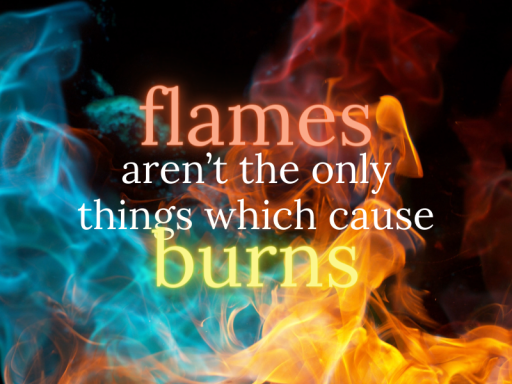Workplace burns, scalds, and hazards include:
🔴 Thermal burns: Resulting from contact with hot liquids, open flames, hot objects, or explosions.
🔴 Chemical burns: Arising when skin or eyes come into contact with acidic, alkaline, or corrosive substances, including industrial cleaners.
🔴 Electrical burns: Caused by heat from electrical currents.
🔴 Sun exposure burns: Occurring due to extended outdoor work in hot conditions and prolonged sunlight exposure.
As an employer, it’s your legal responsibility to make sure that the workplace is safe and that sufficient training and hazard communications have been shared with your team. Workplace accidents which cause burns are very preventable if we take the right precautions and educate ourselves about the dangers.
Let’s learn more about the types of burns we might encounter...
🔥 Thermal Burns — Thermal burns happen when heat from liquids, open flames, hot objects, or explosions injures the skin. The main focus for treating thermal burns is to promptly stop the burning and control the damage.
How to prevent them:
- Wear Personal Protective Equipment
- Use fire prevention tactics
- Have procedures and emergency action plans related to fire detection and protection.
🧪 Chemical Burns — Chemical burns occur when the skin or eyes touch potent acids, alkaloids, or other harsh substances that corrode or damage the skin and underlying tissues. Such incidents can happen in work settings due to contact with industrial cleaners (like rust removers or drain cleaners) or exposure to chemicals in labs and manufacturing sites.
How to prevent them:
- Make sure all workers are well-versed in Hazard Communication, which covers the symbols and labels that will communicate chemical risk. These labels will also include the important information on the steps workers can take to prevent burns if they come into contact with dangerous chemicals.
- Ensure workers who will come into contact with chemicals have Hazard Communication training and take refresher courses as these standards can be updated often.
⚡️ Electrical Burns — Current travels through body and meets resistance in tissue, resulting in heat burn injuries.
How to prevent them:
- Clearly label high-voltage areas and machinery
- Identify live wires
- Avoid contact with water while working with electricity
- Wear the personal protective equipment necessary to avoid burns by electricity.
☀️ Sun Exposure Burns — Although they might also be classified as thermal burns, sun exposure burns deserve distinct attention.
How to prevent them:
- Train employees in sun safety practices
- Reduce the hours working under harsh direct sun
- Seek shade if possible
- Wear sun-protective work clothing, hats and sunscreen to reduce the risk of burns from sun exposure.
What can you do as an employer?
By law, employers have a responsibility to provide a safe workplace and, when it comes to burns, there are a few ways employers can help to provide safe workplaces.
Initial Training
Ensuring employees receive proper training from the start is a critical measure for employers. This training must encompass potential on-site hazards, while also imparting skills to identify previously unaddressed dangers. Furthermore, employers should ensure employees receive specialised training for their specific job roles. This includes comprehensive safety instruction regarding machinery, chemicals, and any unique hazards tied to their tasks.
Refresher Training
Beyond the initial training, employers should consistently update their training content. This practice keeps employees current with evolving standards and reinforces the essential concepts.
Hazard Communication
Employers have a responsibility to use colour codes, posters, labels, or signs to alert employees to potential hazards. These Hazard Communication tools play a crucial role in burn prevention. Workers must be well-versed in recognising symbols and other communication codes for hazards.
Remember, when it comes to safety, we can back you up across the full spectrum of risks, regulations and training. What No Safety are experts in the Health & Safety field and we take the well-being of your business, your staff, and your reputation seriously. If you need support in navigating your H&S business responsibilities, reach out to us.
abarrett@whatnosafety.co.uk | 01722 326 390

